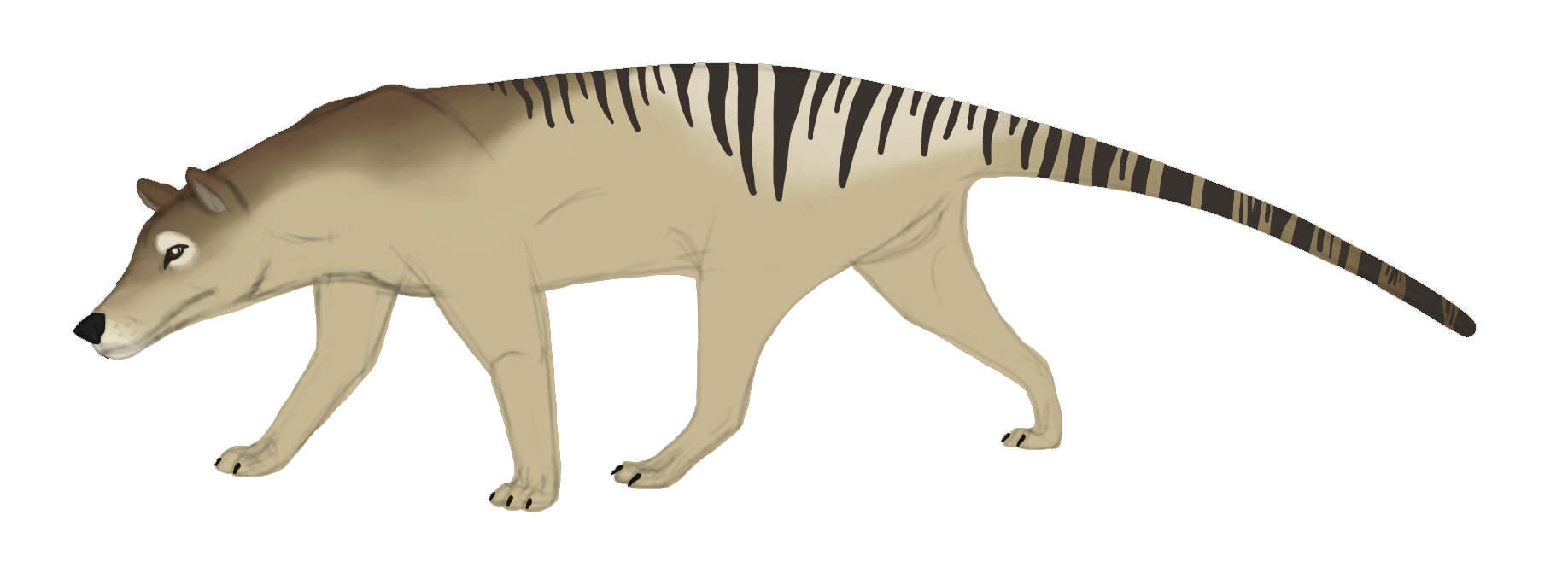Thylacine

|
|
|
The thylacine is a superficially doglike marsupial related to quolls and the Tasmanian devil. Its tan coat is covered with distinctive stripes on the back, rump, and tail, earning it the nickname "Tasmanian tiger". Its skull is very similar to that of a coyote, and can open up to 80 degrees. They have a rear-facing pouch, unlike many other marsupials, and both sexes have one. Shy nocturnal creatures, thylacines rely on sight and sound when hunting. Its diet consists of a variety of mammals and birds. Thylacines hunt in family packs. They communicate with guttural barks while hunting. The thylacine's preferred habitat was dry forests and shrublands. Thylacines breed year-round and have two to four pups at a time. The pups remained hairless and blind for months. Thylacine-human relations were never great. They were often blamed for killing livestock, even though the photograph used as "definitine proof" was hoaxed. A bounty was placed on their heads, encouraging the eradication of wild thylacines. By the time they got federal protection as an endangered species, only one captive individual remained. He died on 7 September 1936. Our thylacines aren't on exhibit yet! Our population is kept behind the scenes for now, training for a potential reintroduction to western Tasmania! We were able to resurrect thylacines with DNA from thylacine skins, bones, and preserved joeys. |
Scientific name Location Time Length Diet |